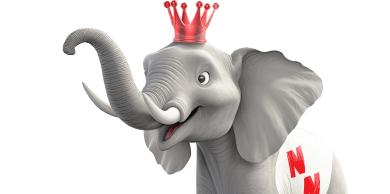1.800.226.6536
Who hasn’t heard the phrase, “If you are having a picnic, don’t invite the ants”? But that is just what we do every day here in Florida whether we mean to or not. Florida ants are attracted to our homes and kitchens as a main source of food and water. Once they move onto the property to nest, it doesn’t take long for these tiny creatures to become a real problem for homeowners across the state.
Florida is home to several varieties of ants. Some of them are more of an irritant than a danger, but a few varieties have proven to be harmful to either the home or the people and pets that live there. Being able to tell which is which can be useful. Here are some of the most common species of ants living in Florida.
Ghost Ants
The ghost ant ranks number one for nuisance ants in this area. They are only about 1/16th inches long with a dark head and light colored legs and abdomen. Their tiny stature helps them to blend in well with homes and outbuildings, which is where they are typically found. Attracted to our homes by sweet foods and foods high in protein, many people do not even realize they are there until they find them in a bag of sugar or crawling on an unsupervised bologna sandwich.
The good news is that ghost ants do not transmit disease or damage the property in any way. The bad news is that few of us want to share our sweet tea with them while we watch television.
White-Footed Ants
At only 1/8 of an inch long, the white-footed ant features a black or near-black body with light colored feet. These ants typically come out during the rainy season from June to September when they are out and about sucking up as much honeydew as they can from some of the plants that frequent flower gardens in the area.
Like the ghost ant, white-footed ants are attracted to our homes essentially for sweet foods and any protein they can find. Though they nest above the ground, these ants can easily make their way into areas that are damp like kitchens and baths. These ants pose no threat to people or the property.
Caribbean Crazy Ants
Another quick pest in the ant family is the Caribbean crazy ant. These guys are yellowish-brown to reddish-brown and are relatively new to our shores, coming to the U.S. years ago on cargo ships. They mostly eat honeydew and other insects but can certainly find their way into buildings across the state.
Though Caribbean crazy ants are not dangerous, they do travel together in very large numbers. They can quickly become a problem if they nest near a home.
Black Crazy Ants
The black crazy ant is a year-round problem in Florida. These guys are black ants about 1/8th of an inch long. They spend their time nesting in rocks or debris found in the yard or woods. If they find their way into a home it is probably because they are looking for something sweet to eat or something greasy. It isn’t unusual to find these guys all over the hood above a stove or all over a spill on the floor or counter.
These ants are not dangerous but can be very annoying houseguests and very difficult to catch due to their swift movements.
Bigheaded Ants
These ants are hard to mistake for any other. They are roughly the same size as the white-footed ant, but their head is much larger than the rest of them giving them a bit of a tiny bobble head appearance. The bigheaded ant is active through most of the year except for the coolest months in the region.
Bigheaded ants spend a lot of time living in nests in the lawn or on the sides of walkways and driveways. They can find their way inside if they are attracted by the scent of their favored food sources such as sweets, meats, or greasy foods.
Even with their overly large heads, there is nothing dangerous or destructive about the bigheaded ant. Hopefully, they will stay outside where they belong and not become an overwhelming nuisance inside.
Florida Carpenter Ants
The Florida carpenter ant features a red or orange colored head and thorax and the rest of their body is typically black. One of the larger ants, the Florida carpenter ant can get to over a half an inch long. It is not at all unusual for these ants to nest in damaged wood that could be a tree or the wood under the siding of a house.
It is a misconception that these ants eat wood; they do tunnel through it, though, to make more space for their queen to continue to breed and lay eggs. Before you know it, you could be looking at a thousand or more ants living inside the walls.
The Florida carpenter ant doesn’t bite, but they can do a massive amount of damage to the structure of a building in a relatively short time.
Fire Ants
These ants can range from black to red and are generally between 1/8th and 1/4 inch long. The fire ant is mostly attracted to fruity foods and sugary substances, but they will eat greasy foods as well. These ants do not usually nest inside preferring lawns and other areas outside.
If a pet or person should accidentally stumble upon one of their nests, the fire ants will quickly mobilize to deter any intruder. In a matter of minutes, the intruder is covered in painful stings that can prove extremely dangerous if the victim has an allergy.
Though many of the ants in Florida are harmless, it isn’t a good idea to let them move into your home. Remember, ants never travel alone. No matter which kind of ants you are dealing with give Nozzle Nolen a call. Our expert team will be on their way to help identify your pest problem and to give those ants their walking papers.




